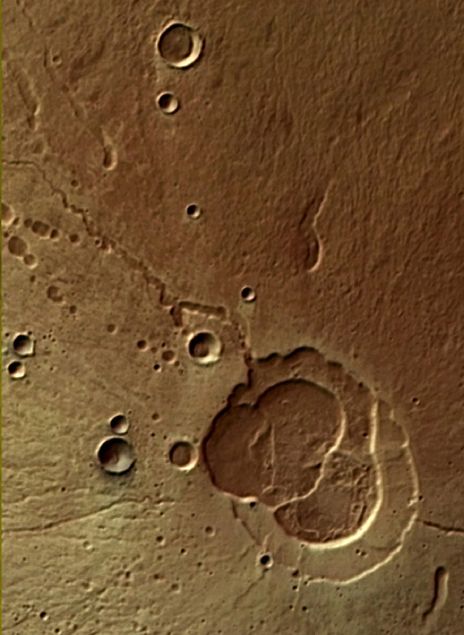 Once again, good to see all astronomy fans here hungry for more astronomy news, updates and interesting facts! Now today, I'm researching about the mysterious red planet - Mars......
Once again, good to see all astronomy fans here hungry for more astronomy news, updates and interesting facts! Now today, I'm researching about the mysterious red planet - Mars...... As all of you should know, Mars is now frozen, with no single drop of liquid water as water is frozen solid. But there are still some evidences showing that there may have been liquid water on its surface when Mars was young, however, is this TRUE?
For some contextual knowledge, the average temperature of this Red Planet is actually negative 55 degrees Celsius (-67 F)! So freezingly C...O....COOL! However, do you know that when the temperature rises, the highest recorded temperature is a balmy 20 degrees C (68 F)! During this period, this thick layer of ice turns directly into a gas, skipping the liquid phase entirely because of the low atmospheric pressure.
Many scientists think Mars was cold when it was young - cold enough so that surface water should have been frozen solid. One way around this problem is if the chemistry of the water was such that it could remain liquid at lower temperatures. On Earth, the salt in seawater prevents it from freezing at the same temperature as freshwater. For early Mars to be cold but still wet, however, the water would have had to be much saltier than seems likely.
However, there is still another possibility that Mars was actually warmer in the past than colder. At first glance, you may feel that this idea does not make any sense to you, however, think again. You see, the Sun was fainter back then, long ago, so the planet should have been even colder in the past and then gradually warmed up as the Sun grew brighter. But sunlight is not the only way to warm a planet, isn't it?
An atmosphere can also help keep conditions toasty. Okay, just look at Venus, thick greenhouse atmosphere has actually raised its average surface temperature to a searing 464 degrees Celsius (867 F)! So can you see the effects of greenhouse atmosphere on the warming of planet?
Think again, could Mars also once have had a greenhouse atmosphere that warmed the planet enough so it is able to keep water flowing across its surface in the past?
However, some scientists do not think this way. Professor Brian Toon of the University of Colorado had discussed the possibility of a warm and wet Mars at the recent NASA Astrobiology Science Conference in League City, Texas.
"We've spent 30 years on the greenhouse effect and no one has solved the problem in a credible way so far,” noted Professor Toon. “On the greenhouse problem, we're just drifting into deeper and deeper complexity."
Why does the greenhouse climate work so well to heat up Venus but not Mars? The thick clouds of Venus also bounce a lot of sunlight off into space, and that reflection is why we’re not able to see the surface of Venus in the visible light spectrum. One answer is that Venus is much closer to the Sun, so it receives substantially more sunlight than Mars does. According to Toon, another reason is that Mars is little. The lower gravity of a less massive world reduces the rate that air cools with altitude. On Earth this rate is about 10 degrees Kelvin per kilometer, but on Mars the rate is about half that.
“This makes it harder to get a greenhouse effect, giving you less ‘bang for the buck’ for your greenhouse gases,” Professor Toon said. “Mars is hard to warm up because it’s so small.”
Also, Professor Toon believes that, rather than a greenhouse atmosphere keeping Mars warm and wet, the canyons and river beds we see on Mars formed due to periodic asteroid and comet impacts. In this scenario, impacts would have filled the atmosphere with vaporized rock and ice and resulted in several years of rainfall and flooding that created the erosion features on Mars.
So, as you can see, this is one explanation by Professor Toon on the formation of flowing water on the red planet, Mars. However, you may have different viewpoints and opinions than what you see in this post. So feel free to comment in the discussion forum. Also, you will see another explanation on the formation of flowing liquid water on Mars very soon....... Good Luck!
Image resources:



